Whether we’re looking for a hearty lunch or a comforting dinner, it’s difficult to beat a big bowl of minestrone with a mountain of grated cheese and a hunk of crusty sourdough bread. It’s one of the most nurturing, fulfilling, and deeply satisfying soups you’ll want to hang on to, whether you’re in the thick of winter or the heat of summer. The deeply rich tomato broth combined with the earthy mirepoix, zucchini, shells, and kale offer so much variety—this is a soup that’s never boring. Once you’ve tried our best-ever recipe, you might just become your family’s very own minestrone connoisseur.
What’s the difference between minestrone and pasta e fagioli?
Ingredient-wise, the two vegetable-centric tomato and broth-based soups are on similar planes. The minestrone often includes a mirepoix of onions, celery, and carrots at its base. The vegetables will include a summer squash, like zucchini, as well as a leafy green, such as kale, spinach, or escarole. You’ll want to include pieces of a waxy potato, miniature ditalini, or shells (I’d opt to include both), and a white bean.
It’s generally a soup with a brothier viscosity rather than a stewy thick one. That’s where pasta e fagioli makes its entrance. The base consists of tomato, broth, and a ratio of whole to mashed beans that add a thicker texture. Pork products such as bacon or pancetta can be added for salty, meaty undertone, as well as a potato, a pasta, and a leafy green.
How to make the best minestrone:
— The mirepoix. So many of our soups rely on the onion to carrot to celery ratio (two parts onion to one part each celery and carrot), and minestrone is one of them. Onions are cut into medium pieces that hold up throughout the duration of cooking, but also slightly melt into the broth. Make sure to cut the carrots and celery the same width so they can cook evenly together. Tip: You don’t even need to peel your carrots. Just give them a good scrub and trim the ends.
— The tomatoes. Make sure you’re purchasing a good-quality can of tomatoes here, even if it means spending an extra buck. We recommend San Marzano and Bianco di Napoli, but also look out for canned varieties that state “DOP” or protected designation of origin. This means wherever those tomatoes were grown, the producer has to abide by strict guidelines in the region of its growth to maintain the integrity of the crop.
— The broth. There are so many chicken broth brands made with yeast extract, sugar, and vegetable concentrate. What does that all have to do with chicken broth, anyway? Kettle and Fire, Swanson, and College Inn are a couple of good brands to look out for.
— The cheese. Use your Parmesan rind to add a little more salty character. Don’t remove it once the soup has come off the heat either—leave it in to keep the flavor going. If you happen to have leftovers, store it right in the soup.
— The beans. No need to drain the liquid—add the entire can. The thickened liquid will give the soup just a touch of body. A heartier soup like this one screams for it, especially when it’s not using the beans to thicken, like in pasta e fagioli.
Variations:
Looking to get creative with this classic soup? Bulk it up with our creamy tortellini minestrone, or turn to our copycat Olive Garden minestrone soup if you want to make that version in the comfort of your own home.
Storage:
All of that broth makes you full a little faster, so unless you’re making a tiny batch for two, you might have some leftovers. Store this soup in an airtight container for up to 5 days. Freeze up to 2 weeks in individual containers, bring to room temperature, and reheat over medium-low heat.
Made this classic soup? Let us know how it went in the comments below!

Whether we’re looking for a hearty lunch or a comforting dinner, it’s difficult to beat a big bowl of minestrone with a mountain of grated cheese and a hunk of crusty sourdough bread. It’s one of the most nurturing, fulfilling, and deeply satisfying soups you’ll want to hang on to, whether you’re in the thick of winter or the heat of summer. The deeply rich tomato broth combined with the earthy mirepoix, zucchini, shells, and kale offer so much variety—this is a soup that’s never boring. Once you’ve tried our best-ever recipe, you might just become your family’s very own minestrone connoisseur.
What’s the difference between minestrone and pasta e fagioli?
Ingredient-wise, the two vegetable-centric tomato and broth-based soups are on similar planes. The minestrone often includes a mirepoix of onions, celery, and carrots at its base. The vegetables will include a summer squash, like zucchini, as well as a leafy green, such as kale, spinach, or escarole. You’ll want to include pieces of a waxy potato, miniature ditalini, or shells (I’d opt to include both), and a white bean.
It’s generally a soup with a brothier viscosity rather than a stewy thick one. That’s where pasta e fagioli makes its entrance. The base consists of tomato, broth, and a ratio of whole to mashed beans that add a thicker texture. Pork products such as bacon or pancetta can be added for salty, meaty undertone, as well as a potato, a pasta, and a leafy green.
How to make the best minestrone:
— The mirepoix. So many of our soups rely on the onion to carrot to celery ratio (two parts onion to one part each celery and carrot), and minestrone is one of them. Onions are cut into medium pieces that hold up throughout the duration of cooking, but also slightly melt into the broth. Make sure to cut the carrots and celery the same width so they can cook evenly together. Tip: You don’t even need to peel your carrots. Just give them a good scrub and trim the ends.
— The tomatoes. Make sure you’re purchasing a good-quality can of tomatoes here, even if it means spending an extra buck. We recommend San Marzano and Bianco di Napoli, but also look out for canned varieties that state “DOP” or protected designation of origin. This means wherever those tomatoes were grown, the producer has to abide by strict guidelines in the region of its growth to maintain the integrity of the crop.
— The broth. There are so many chicken broth brands made with yeast extract, sugar, and vegetable concentrate. What does that all have to do with chicken broth, anyway? Kettle and Fire, Swanson, and College Inn are a couple of good brands to look out for.
— The cheese. Use your Parmesan rind to add a little more salty character. Don’t remove it once the soup has come off the heat either—leave it in to keep the flavor going. If you happen to have leftovers, store it right in the soup.
— The beans. No need to drain the liquid—add the entire can. The thickened liquid will give the soup just a touch of body. A heartier soup like this one screams for it, especially when it’s not using the beans to thicken, like in pasta e fagioli.
Variations:
Looking to get creative with this classic soup? Bulk it up with our creamy tortellini minestrone, or turn to our copycat Olive Garden minestrone soup if you want to make that version in the comfort of your own home.
Storage:
All of that broth makes you full a little faster, so unless you’re making a tiny batch for two, you might have some leftovers. Store this soup in an airtight container for up to 5 days. Freeze up to 2 weeks in individual containers, bring to room temperature, and reheat over medium-low heat.
Made this classic soup? Let us know how it went in the comments below!
- Yields:
-
6
serving(s)
- Prep Time:
- 10 mins
- Total Time:
- 45 mins
- Cal/Serv:
- 428
Directions
-
- Step 1
In a medium saucepan over high heat, bring 5 cups water to a boil; season with 1 1/2 teaspoons salt. Add shells and cook, stirring occasionally, until al dente, about 7 minutes. Drain and transfer to a medium bowl. Add butter and toss to combine.
- Step 2Meanwhile, in a large pot over medium-high heat, heat oil. Add onions, celery, and carrots; season with salt and pepper. Cover and cook, stirring occasionally, until onion is translucent and carrots begin to soften, about 8 minutes. Uncover, add garlic, and cook, stirring, until fragrant, about 1 minute. Add tomato paste and cook, stirring, until brick red, about 1 minute. Add broth, tomatoes, and Parmesan rind (if using). Bring to a simmer and cook, stirring occasionally, until tomatoes are cooked down and broth is slightly thickened, about 5 minutes; season with salt and pepper, if needed.
- Step 3Reduce heat to medium. Add zucchini and beans and cook, stirring occasionally, until al dente, 7 to 8 minutes. Remove from heat and stir in kale, basil, and pasta.
- Step 4Divide soup among bowls. Top with Parmesan and drizzle with oil.
- Step 1


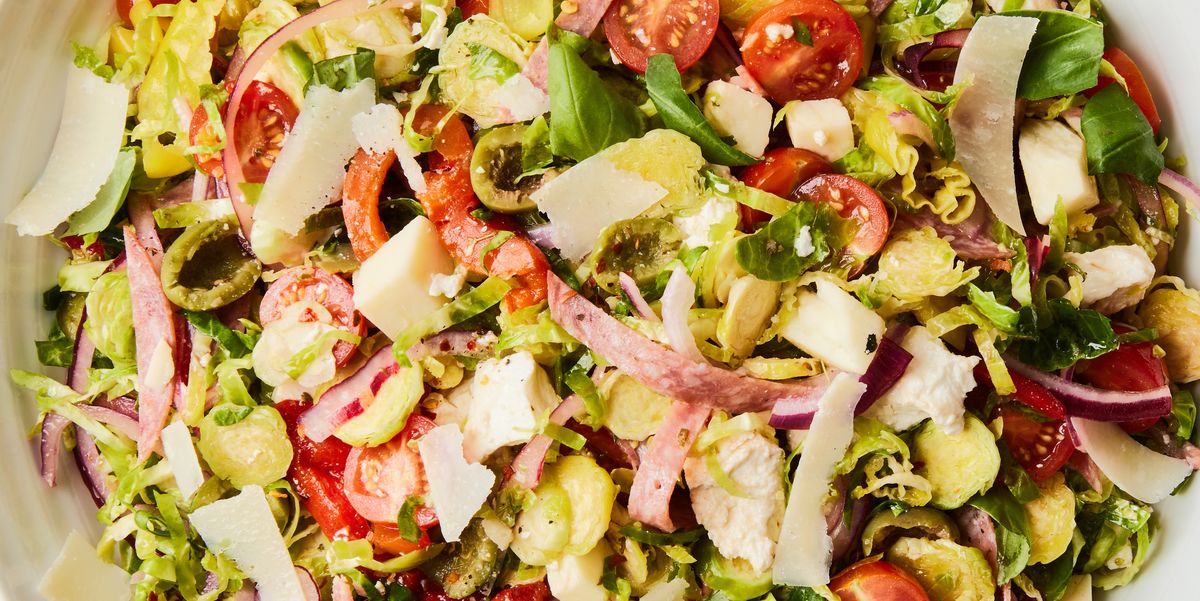
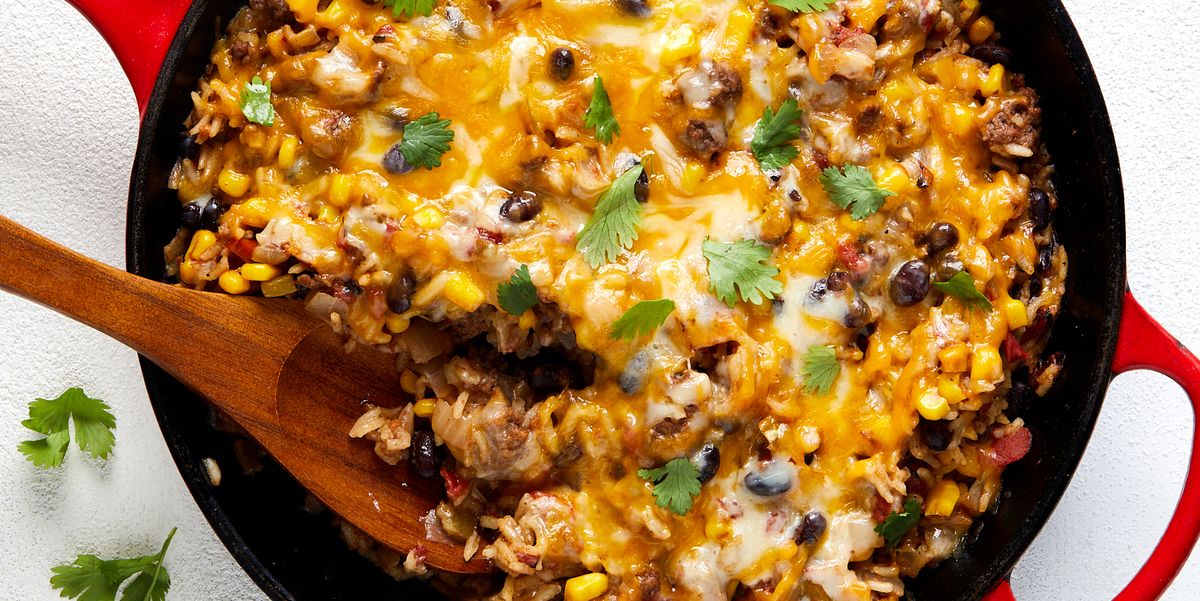
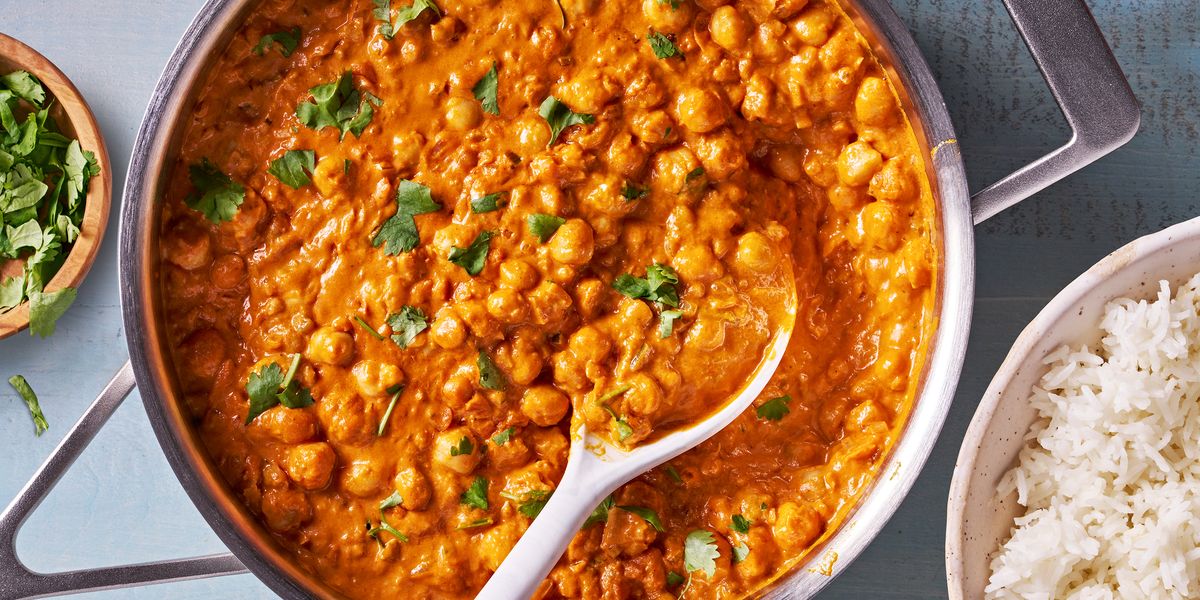
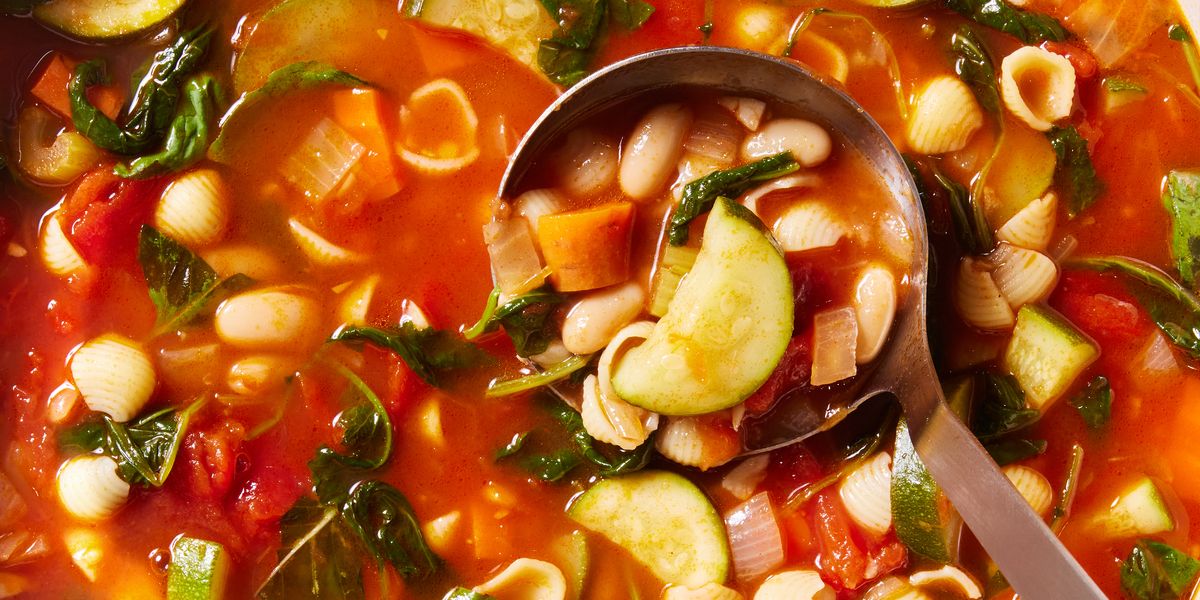
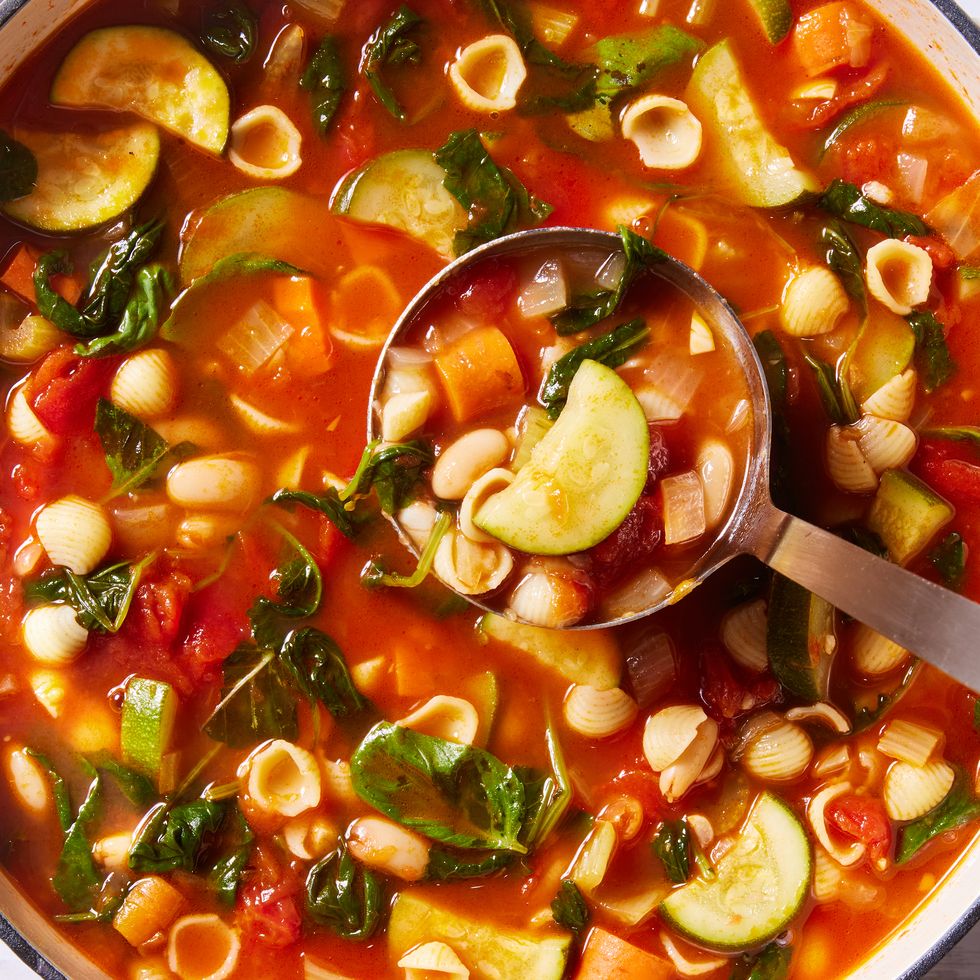







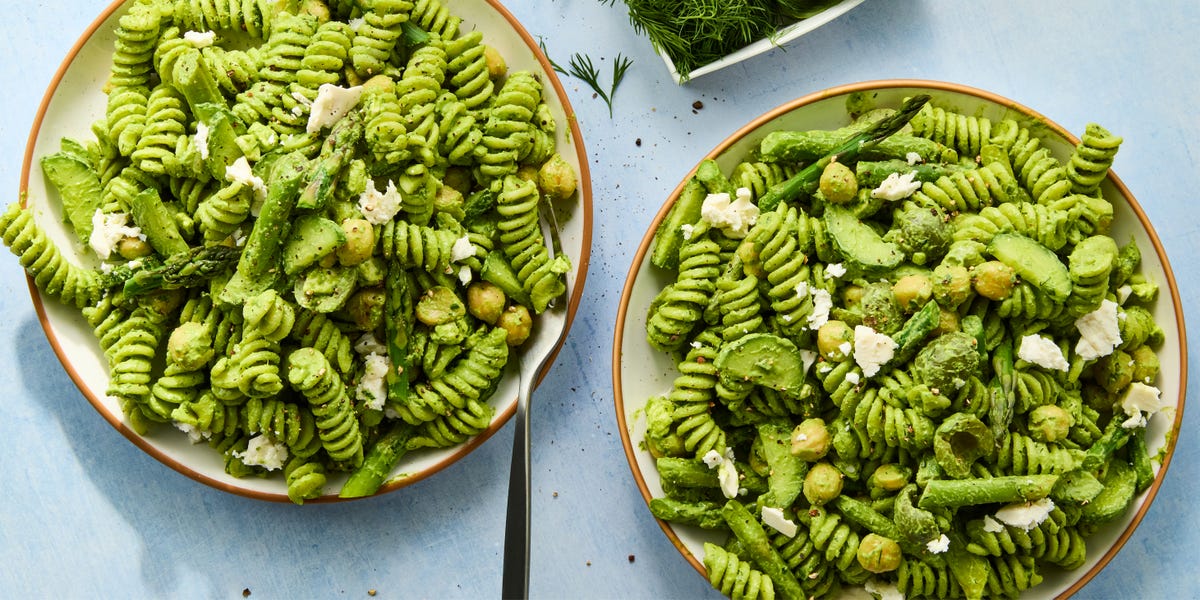




Leave a Reply